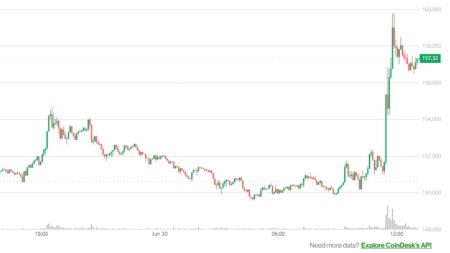Celebrating a Decade of Ethereum: A Journey into the Future of Web3
On July 30, 2025, the cryptocurrency and tech world will celebrate a significant milestone: the tenth anniversary of Ethereum’s mainnet launch. As the world’s first smart contract platform, Ethereum revolutionized how we think about software and decentralized applications (dApps). The implications of participation in systems that are owned by the collective and where rules are encoded in smart contracts instead of dictated by a central authority appear utopian. However, as we look back over the last decade, we find that the promised vision of a decentralized internet, often termed "Web3," still remains largely unrealized.
The co-founder of Ethereum, Gavin Wood, envisioned a Web3 world with services like Amazon and Facebook existing on a decentralized architecture. He, along with other leading figures in the space, anticipated that Ethereum would have a profound impact on how we communicate and interact with online platforms. A year post-launch, libertarian journalist Jim Epstein stated that services traditionally monopolized by tech giants would instead be facilitated by decentralized systems distributed around the globe. Vitalik Buterin, Ethereum’s creator, articulated a vision in 2014 that included everything from decentralized finance (DeFi) to cloud storage, encapsulating a future where individuals own their data and participate in governance.
Yet, a crucial barrier to realizing this vision is scalability. Modern applications must handle millions of users. While Ethereum currently processes about 14 transactions per second (TPS), platforms like Instagram manage over a billion daily uploads, and eBay facilitates billions in quarterly transactions. To create an efficient decentralized marketplace akin to eBay, every item listing and auction would require on-chain transactions, complicating user interactions and necessitating an unprecedented throughput from the underlying blockchain infrastructure. However, ten years later, this infrastructure often remains insufficient to meet growing demand.
Economic dynamics also hinder the proliferation of Web3 applications. Current business models tend to require massive scale to be economically viable. Layer 2 solutions often segregate users, limiting interoperability and compounding challenges. For example, OpenSea, while dominating the NFT market, struggled with profitability despite high-value transactions. If a decentralized social network were to charge users for interactions, it would likely face immediate rejection from users accustomed to free platforms. This economic challenge proves even more acute for lower-value transactions essential to everyday commerce, putting into question the feasibility of decentralized marketplaces.
However, hope is not lost. Insights are emerging from the industry that suggest addressing the trade-off between security, decentralization, and scalability is possible. Incremental progress in transaction throughput is being achieved as technology matures. Techniques like zero-knowledge proofs are being developed, which allow users to validate transactions without demanding every node verify each step. This could significantly lower the cost associated with adding additional transactions, positioning blockchains to support the economics mainstream applications require.
Reflecting on Ethereum’s journey, it is evident that while the pace of progress may have been disappointing, the lessons learned are paving the path forward. If the next decade unfolds more swiftly, we may yet see the realization of the Web3 dream, where decentralized platforms genuinely flourish, disrupting traditional models and empowering users globally. As we celebrate Ethereum’s tenth anniversary, the hope is that both the technology and its communities will catalyze a new era in internet use—one where the promises of decentralized applications are fully realized, driving an equitable and open digital future.

















